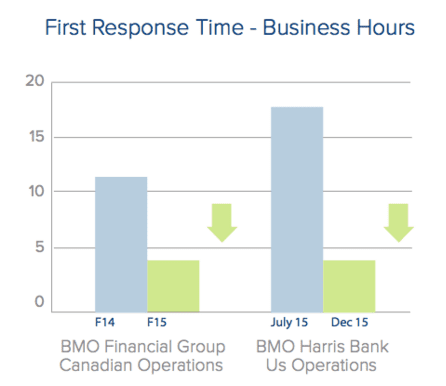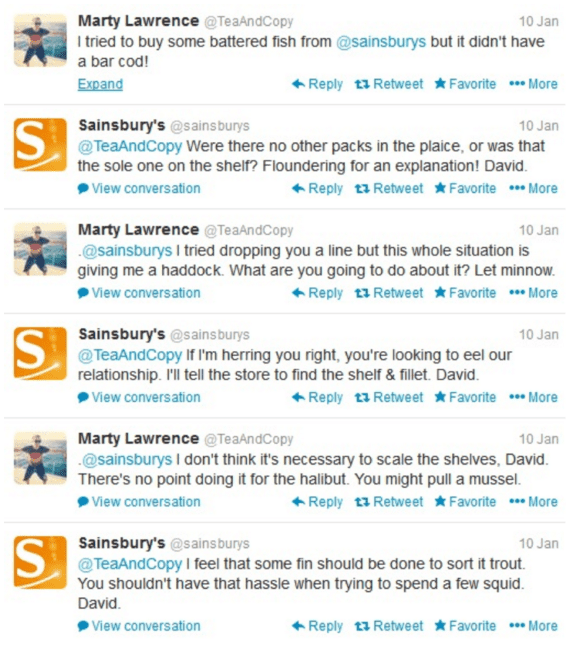How to deal with customer complaints on social
Social media is finally getting a little respect. Companies and organizations of all types and sizes are beginning to realize social for its vast potential as a customer service platform.
We’ve witnessed the awesome power of corporate self-sabotage on social media - BlackBerry tweeting promotional material from an iPhone, Comcast’s infamous stubborn retention rep, and British Airways’ failure to remember that Twitter operates 24/7. Now, companies are learning how to use social customer service platforms to respond to customer issues in a timely, personable, and effective way, and to do so proactively. Here are some tips we’ve compiled to help you build your strategy in dealing with customer issues on social media – and emerge with nothing less than a sterling impression left on your customer. 
1. Fast Response Time
As a rule, the infuriation felt by slow response time is the precise emotional polar opposite of the sheer delight accorded by quick response. The pervasive instant-everything internet culture has seen consumers’ patience and attention span plummet in tandem, and as a result, instant and personable engagement is more important than ever.
Implementing your social support platform will enable representatives to respond to customer issues – both public and private – quickly and on the customer’s ‘home turf’.
Bank of Montreal Speeds it up!

Bank of Montreal (BMO) increased their Social Media Customer Care agents and languages served while seeing a decrease in First Response time and other important service metrics. Being in a highly regulated industry, means that finaknew that it was important to be able to measure their customer service over Social in terms that would make since in comparison against their more legacy channels of service. Social Media Customer Care also powered a marked decrease in FRT, an increase in Positive Sentiment and an increase in Responses made within less than one hour.
2. De-escalate with Humor and Humanity
Customers hate robotic support reps. This is a fact that managers should take far more seriously than they seem to, as nothing compounds the irateness of a customer with an issue, than having it dealt with by a monotonic and monosyllabic call center droid. In the past, consumers had a very limited, linear range in bringing product issues to companies – waiting at length for a phone audience with a gruff rep was the only option. Today’s multiplicity of access points demands an entirely different standard of encounter.
Luckily, social media users are known for their appreciation of humor both crass and fine, and an infusion of light-spiritedness (as an accompaniment to solving the issue, naturally) can defuse many combative situations, humanizing your entire organization. Combined with genuine human warmth and caring, this will leave your customer not only satisfied, but downright enamored, too – and probably a loyal brand ambassador for life.
Sainsbury’s Kills it whilst being punny

Sometimes customers Tweet the darndest things. Sainsbury’s is a Social Media King in the UK, and fished out a funny exchange from an errant Tweet about a cod. Talk about ‘knowing the customer.’ Sainsbury did a bit of research to know they were talking to self-described ‘pun enthusiast’ so they went in for the kill. They managed to come off human, engaging and even funny. This is the kind of brand sentiment that cannot be bought, it must be earned.
3. Throw Incentives at the Problem
Sure, Wendy only messaged in to complain about the recent spottiness of her internet. But watch how quickly she’ll turn that frown upside-down when you not only respond immediately, kindly, and effectively, but also thrown in a free browsing speed upgrade on the spot. Grumbling customers ultimately all have the same objective: mollification.
Gifts and freebies accomplish that and more, and show the customer that to your organization, relationship building is just as important as problem solving. Every company with a customer-oriented service has small perks like this at its disposal – perks that represent less than a drop in the bucket of its overall expenditures, but will virtually guarantee Wendy’s contentment, and therefore her longevity as a customer. It’s a no-brainer tactical equation, and can be effectively employed not just with retention, but with sales and outreach too.
4. Rally your Brand Advocates
User advocacy is an increasingly important element in brand PR, especially across social networks. Trending popular opinion movements can form in a matter of minutes and have the power to mythologize a company - or utterly ruin it. This shifting of strength squarely into the hands of the consumer community carries the branding efficacy of a thousand Super Bowl commercials, and must be respected as such.
To build advocacy in the new ‘social trust economy’, contact centers must effectively extend contact beyond the center and into the spheres where consumer opinions are formed and strengthened. Channeling your most passionate and knowledgeable experts as staunch public loyalists and helpers to other users shows that yours is a company worth advocating – providing a potent edge in how it is perceived.
Check out this Infographic to learn the difference between a Brand Advocate and a Social Influencer:
 5. Go Above and Beyond - Take it off the digital channel
5. Go Above and Beyond - Take it off the digital channel
One of our customers has an interesting use case for using the power of the social voice to dictate face to face customer interactions. After getting glowing feedback from their social media customer service and less than stellar reviews on their in store service performance, one of our customers decided to conduct a seminar allowing their #SocialFirst™ reps to help educate on tone of voice and humanization of the service experience.
This is ironic, considering that digital channels oftentimes have the reputation of being ‘less human’ and more robotic than in person encounters. It turns out that because of the nature of social media, there were so many insights to share about creating a warm customer experience and focusing on resolution.
In the world of customer service, mishaps happen. But when you show up on time, on the channels where your customers already are - the opportunity can oftentimes well outweigh the risk. The biggest risk that brands face currently is irrelevance because of social silence.

Thanks to
Lauren Stewart for sharing their advice and opinions in this post. Lauren Stewart has worked in Marketing for the past 8 years, both in house and agency side. Lauren has background in social media agency side for Havas Worldwide, having previously worked with brands such as
Amazon.co.uk, InterContinental Hotel Group and Warner Home Video delivering communications campaigns. Currently, Marketing Director EMEA for Conversocial







 Thanks to
Thanks to 


